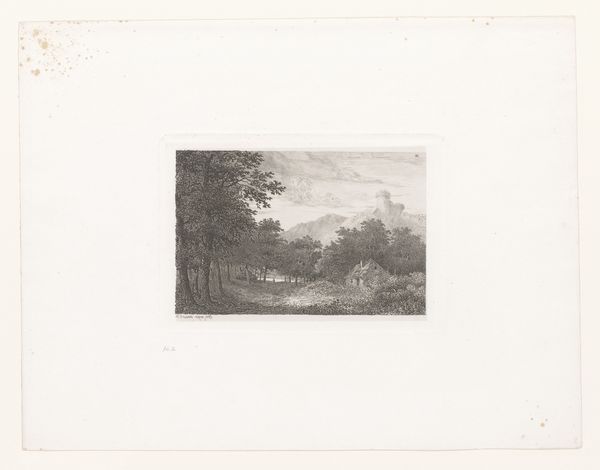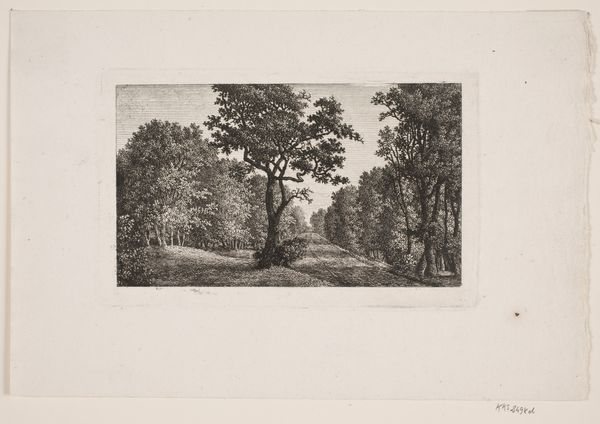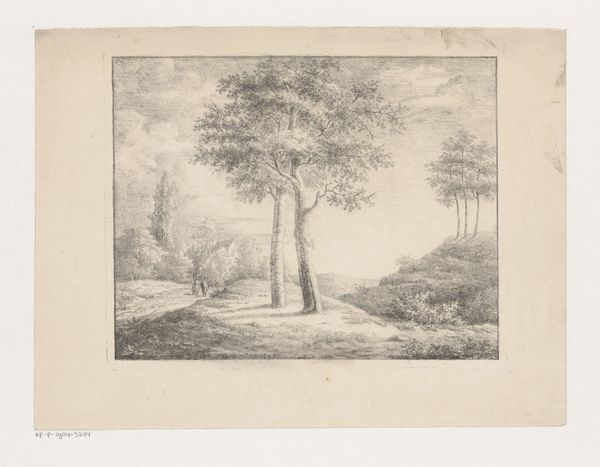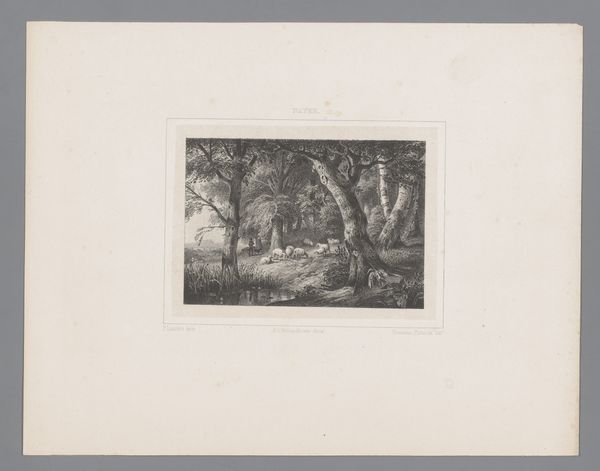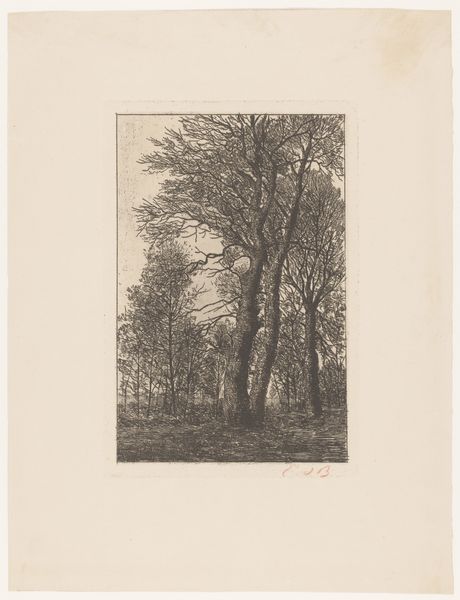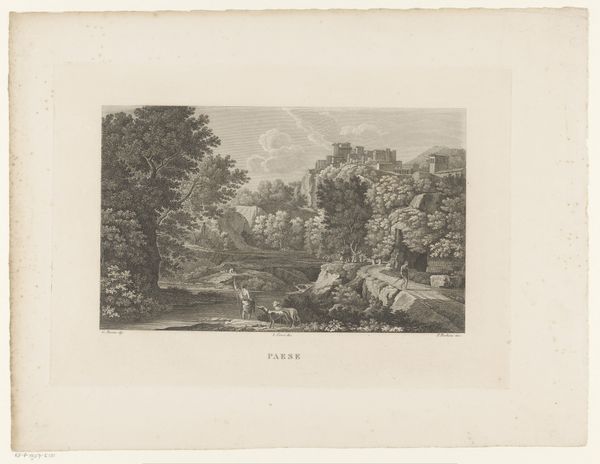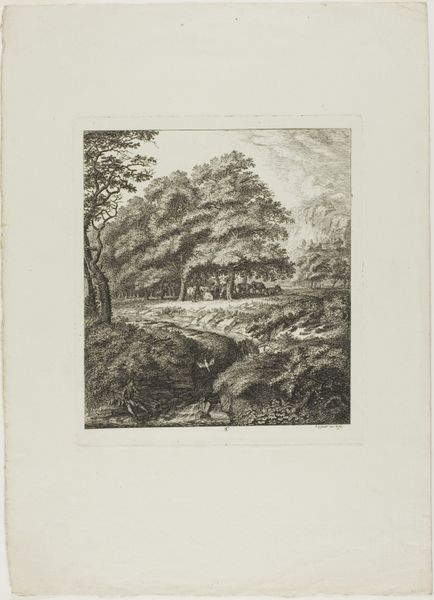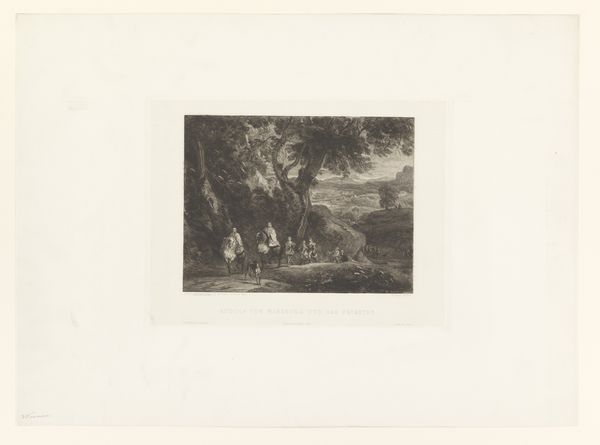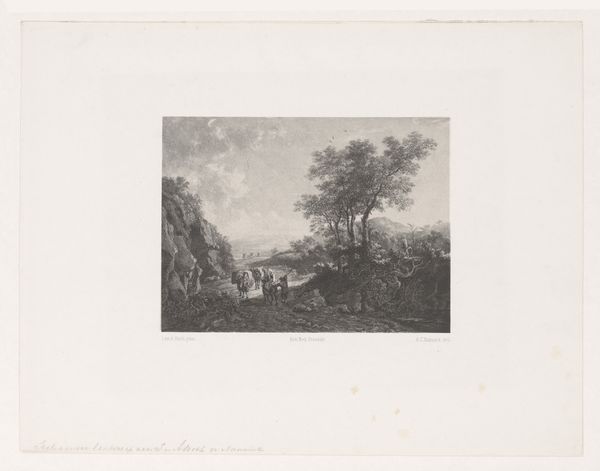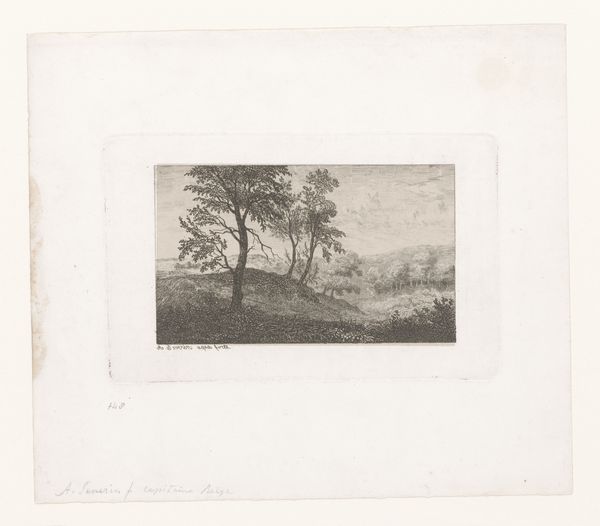
drawing, print, etching, paper
#
drawing
# print
#
etching
#
landscape
#
paper
#
united-states
Dimensions: 101 × 131 mm (image); 143 × 170 mm (plate); 233 × 349 mm (sheet)
Copyright: Public Domain
Curator: This is "Sun Reflecting on the Dew, A Garden Scene," an etching done circa 1812 by William Birch. It's a fascinating example of early American landscape art. Editor: My initial impression is one of quiet, almost melancholic beauty. The monochromatic palette really emphasizes the contrast between light and shadow within the forest scene. It draws the eye into the center. Curator: Birch was working at a time when there was great interest in representing the American landscape as both beautiful and symbolic. Printmaking was an important way for these images to reach a broad audience. Editor: And what strikes me is how romanticized it feels. I mean, the pristine wilderness presented here erases any sense of human impact, a narrative that really clashes with the colonial realities and dispossession of native populations that was actively shaping the physical space around it. Curator: That’s a fair point. While Birch may have aimed to document a seemingly untouched nature, these images circulated among a society grappling with issues of land ownership, expansion, and indeed, displacement. This idyllic scene, in some ways, serves as propaganda for colonial advancement. Editor: Exactly. It also raises questions of accessibility—who would have been able to stroll through such a landscape? Certainly not everyone in that society. And what perspectives were excluded from shaping how it was represented? Curator: Prints like these played a crucial role in defining an idea of America, shaping national identity. They acted as documents, in some ways, informing citizens in Europe and the States about the wonder and possibility of this "new" place. Editor: While visually captivating, we must acknowledge how images like these might veil over histories of dispossession and inequity. Appreciating the artistry, it seems essential that we simultaneously engage in critical dialogue on what it conceals as much as it reveals about this time period. Curator: I find that by considering the print's historical context, we can find it’s not just a representation of a scene but an invitation to critically engage with ideas of national identity, progress, and exclusion. Editor: Absolutely, reflecting on that makes engaging with art a continual invitation to look at it with a very complex lens.
Comments
No comments
Be the first to comment and join the conversation on the ultimate creative platform.
